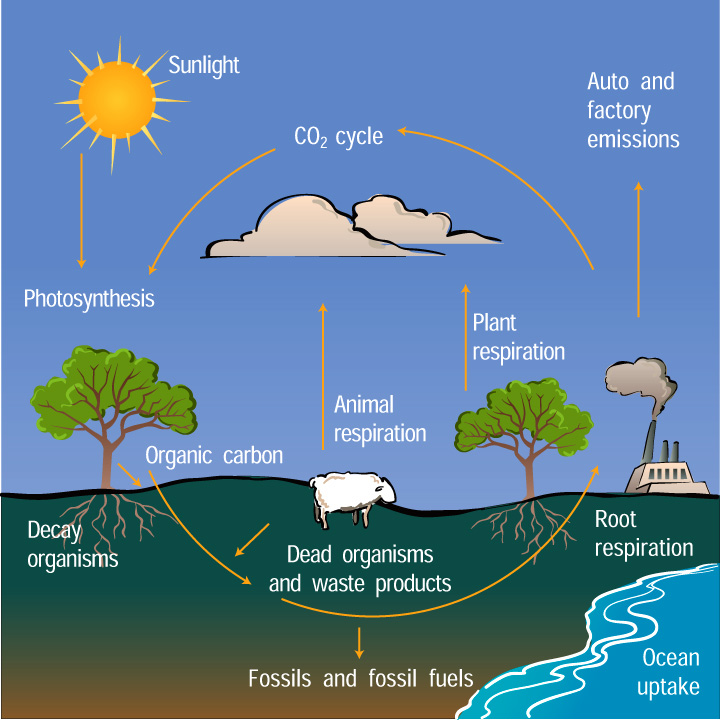62.WHAT IS THE DIFFERENCE BETWEEN GOLD AND FOOL’S GOLD?
If you’re a prospector looking for gold, knowing the answer can be the difference between being immensely wealthy and immensely poor! Many a miner has come upon what he thought was gold, only to discover that his dreams of wealth vanished when his “find” was analyzed.
What has come to be known as fool’s gold is a mineral called Iron pyrite. Since it is a yellow mineral with a brilliant luster, it can easily be mistaken for flakes of native gold in a rock.
61.WHAT IS THE CARBON CYCLE?
Of all the chemical elements known to man, perhaps the most interesting one is carbon. Did you know, for example, that in the form of crystal it gives us one of our most valuable gems, the diamond? As graphite, carbon forms the lead of lead pencils. And coal, the source of much of the heat and power of this machine age, is mostly carbon.
But even more important is the fact that carbon is so vital to life. The bodies of all living things are made up of compounds containing carbon. In fact, scientists believe that where carbon is found in any quantity in the earth, there life has probably existed.
60.WHAT IS SILICON?
The crust of the earth, the ground on which people wale and live, is very largely made up of a substance called silicon! Silicon is the second most abundant element on earth, but it is never found in the free state. This means it is always combined with one or more additional elements. Silicon is the major element in act of the rocks except certain ones called the carbonates. Clay, for example, contains an average of 50 percent silicon, and you can be pretty sure that most of the rocks you see have equally large amounts.
Silicon has been found on the stars and even in plants. A large amount of the silicon in the world is found in the form of silica, which is a compound made of oxygen and silicon. Quartz, jasper, opal, and sand are act forms of silica. Ancient peoples used silica to make glass.



